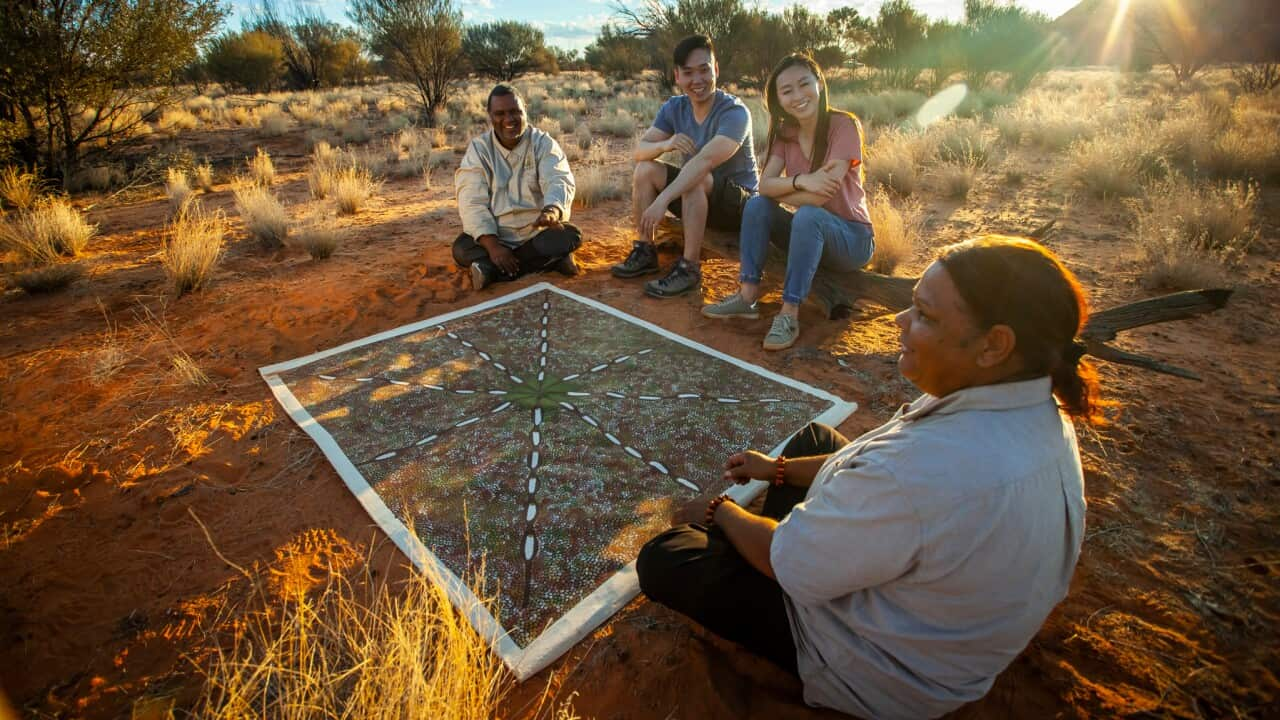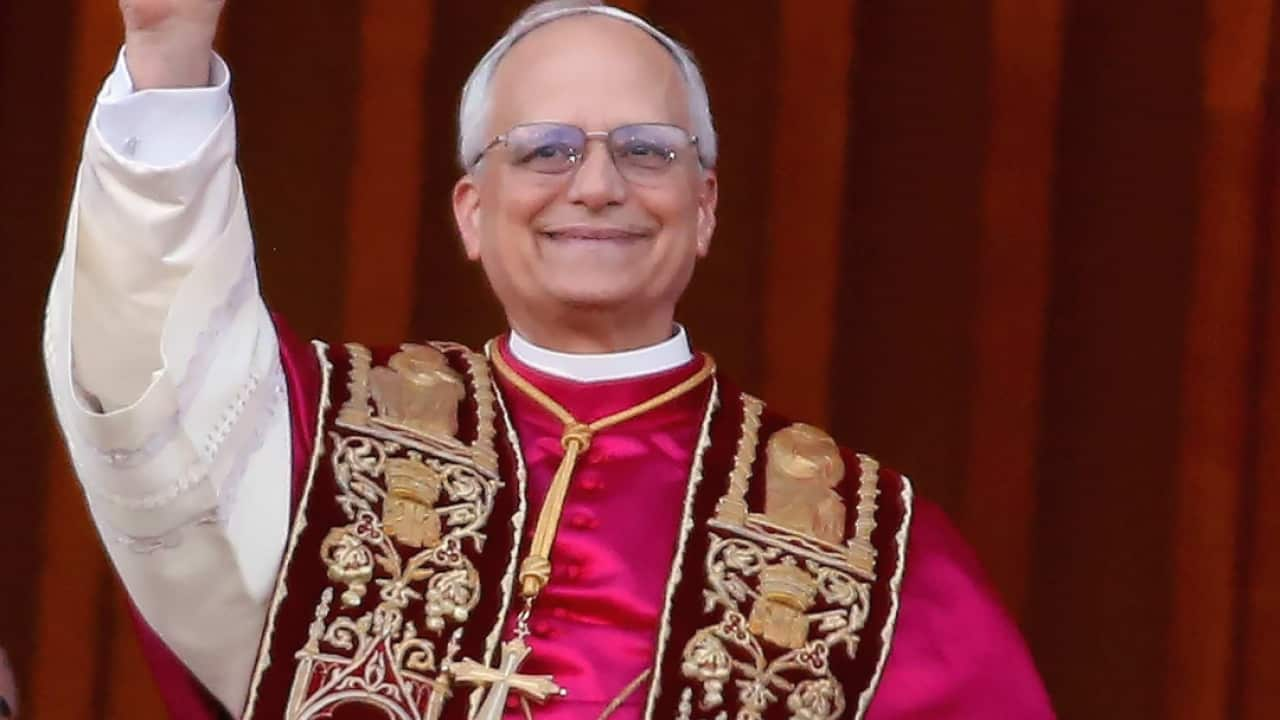Key Points
- Ee kë cie lac yök ye tak lɔn ye ciɛɛŋ e kɔc ke bai thöŋ të nɔŋ Australia ëbɛ̈n. Acïï ye.
- Yïŋ de gɛ̈ɛ̈r de piny cï yïk ee wïc bï loiloi looi cït mɛn tɔ̈u yen në Baai yic, ku lööŋ cï keek tɛ̈ɛ̈k yiic tënë tajiir-cït mɛn yenë ye looi në ajuɛɛr de baai yic.
- In Country-led design, from planning to delivery, First Nations knowledge-holders, the environment, and the practices of the specific project site, drive the process.
Kɔc ke bai ke ciɛɛŋ de kɔc ke bai alɔŋ den yic abɛ̈n aye keek gël ë
Ee run thiɔ̈k ci piääc lɔ Australia, luɔi juëc acï looi eë tɛ̈ɛ̈u ee kek ke kɔc First Nations ë luɔi e thuɔ̈ɔ̈r.
Ku ye kada ye raan naŋ ŋic ee kɔc ke baai ku luɔi ŋoot ke lɔ tueŋ cɔk tïŋ në ɣän ke ciɛɛŋda yic ë bɛ̈i ke Australia?
Ɣok aci tɛn kɔc kuat Aboriginal ku kɔc cie kɔc Aboriginal thiëëc bïk kä keen ŋickë keek rɔm ë cak de ɣän lääu ku ɣööt ye yök tënë ajuiɛɛr ee ŋïny de kɔc ke baai ku kɔc ke piny ciɛɛm.

Batı Avustralya’daki Karijini Ulusal Parkı’ndaki yabani çiçekler. Source: Getty / TED MEAD
Yen ee raan töŋ e kɔc cï athör tɛ ye n gɔ̈t, tääu e lööŋ ke luɔi puɔth apɛi ke ciɛɛŋ e käke tajiir ye dhuknhïïm.
Acï luel kë yeŋo kenë yïŋ, naa ye ɣön e raan ëbɛ̈n, ɣön thöŋ wala kë cï thuur ë päny kɔ̈u, giɛ̈t wïc ciɛɛŋ e kɔc ke baai yök kuat tɛden tɔɔu kek thïn.
ŋïec ëbɛ̈n ee bɛ̈n bei tëdɛ̈t.Professor Brian Martin, co-author International Indigenous Design Charter
“Ku yen ë kën yenë lööŋ path ë luɔi ë kɔc ë thɛɛr ë tɔ̈ thïn tïŋ ku ye ŋiëc yiënda... thääny keek tɛden kenë ku Pɛnden."
Luɔi wɛ̈t e kɔc ke baai nhom ee thuɔ̈ɔ̈r e baai kë cin ciɛɛŋ töŋ kɔc ke bai tɔu ë Australia.
"Wɛ̈t e thööŋ e käŋ acï kä ye röt looi në ɣän juëc yiic jäi. Cïmënë, pan Boonwurrung tɔu Victoria yen a looi thok tɛn Kamilaroi tɛn New South Wales, agut Bidjara ë Queensland ka Noongar ë Perth,” acï Prof Martin kuanyic.
Aci Jefa Greenaway gam. Yen ee raan töŋ e kɔc thɛɛr ŋic thuur ke kɔc thɛɛr tɔ̈ ë Victoria, ke kök pan NSW, yen kuät kɔc Wailwan/Kamilaroi ku Dharawal.
Mr Greenaway ee jam lɔn nadë ke ŋic ee ciɛɛŋ kuotic de kɔc ke baai në thuɔ̈ɔ̈r yic “acï bɛ̈n ke ye dhöl benë röl ku akutnhom ya kony”.
" Yen ee wɛ̈t e thööŋ e thuɔ̈ɔ̈r kuɔɔny....Ke cïï rɔt ye waar, Kɔc ke First Nations akëc naŋ ɣän ke nyuc në tharabetha nhom bïk röt mat ë loiloi dït cï ke yïk yiic."

Jefa Greenaway: “Ɣok aŋic ka juec pinynhom dït kënë yic lɔn nɔŋ yen akuut ke thook wääc kaa 270 ku thook kaa 600.” Credit: Aaron Puls
Tɛ cath yïn Jama e Melbourne yic yïn lëu ba nyooth de ajuɛɛr de thuɔ̈ɔ̈r cï looi eë baai yic tïŋ ë ɣän wën yenë mïth piooc röt rek kenë akutnhom de tajiir ciɛɛl (CBD) ë dhöl de Swanston.
Mr Greenaway, yen rɔm muök wëtwët loon kënë nhom, aci luel akuötnhiim kɔ̈cthɛɛr luui thin keek ci mat thin löön këne yic ee jɔ̈kde yic, acïk nyööth tathɛɛr keye piiu bɛn thin ke thiök keek tɛ ci liɔ̈kliɔ̈k kɔ̈ɔ̈k thin juëc tɛn ruön 60,000 bïk ɣëët Birrarung (yarra River) bïk bɛn dhiët thin.
Akutnhom acï tëde pol ku kueer de plaza looi bïk wɛ̈ɛ̈r yɔu bɛɛr looi, luui ë tiim ku käŋ ku loi pïu ë määt yic kenë aɣɔ̈ɔ̈m tɔ̈u pan piööc lɔ̈ɔ̈m.
Ke thäm thɛɛr de wɛ̈ɛ̈r cï tääu në pïu yiic bï ajuɛɛr de pïu dït ke rɔɔk kuɔɔny, thaam aŋot ke latuëŋ ke kɔ̈k yeen.
It recasts an understanding that we're building upon a legacy of 67,000 years of continuous connection to this place.Jefa Greenaway, Greenaway Architects
Mr Greenaway ee jam ye thuɔ̈ɔ̈rë ee ciɛɛŋ de kɔc ke baai bɛ̈i në dhöl tueŋ.

A University of Melbourne built project recreating the eels’ migration path from water to land, is a metaphor for Indigenous resilience, says architect Jefa Greenaway. Credit: Peter Bennetts
Kɔc ë dhɛ̈ŋ awic bïk ya ŋoot ëke tɔ̈ ke cë röt mat kenë të ku kɔc tɔ̈ thïn, ku cïï lööŋ ke ciɛɛŋ ye tïŋ ke ye luɔɔi e thëm de käŋ ye thök ë thɛɛr kɔ̈k ke luɔi.
“Määth aye yïk ee kaam kä looi ke luɔi, na cɔk ya luɔi ka wic thook ka luɔi de dhöl ë luɔi.
“Na cɔk ya akutnhom de thuɔ̈ɔ̈r ka akutnhom de akuma ka kɔc lui ye luɔɔi kënë yic, ke ka ŋoot ke wïc bïk määth dɔm ke kɔc ku ɣän kak yic.”
Desiree Hernandez Ibinarriaga, yen tïŋ Mexican baai Mayan, Aztec ku Basque kuätden, ku raan dït ë piööc pan piooc Monash yic akutnhom ee thuɔ̈ɔ̈r.
Kääm looi yen PhD wïcwic kenë, ee ci mɛɛt kek nyiir thiik Aboriginal pɛn Auɛtralia ku Mexico ku raan piööc ke cië aboriginal, yen acï dhɛl ee luɔɔi bi yen kene looi bï ŋiëëc Kɔc ke Pinynhom ku ciɛɛŋ e kɔc juëc yök.

The sense of cultural identity is integral to Indigenous design methodologies, says Dr Ibinarriaga. “In design we focus on problem-solving and so [in Country-led design] it becomes essential to look locally, harnessing our surroundings.” Credit: Desiree Hernandez Ibinarriaga
“Yen acï pɛ̈ kai bɛ̈t thöl ba määth cak ku bi ɣɛn gam ë nyïïr, dupiööc ku kɔc lui ë pan piööc.”
Kë wïcde acï thök ë amat de ciɛɛŋ de kä ye röt looi cï looi bï ciɛɛŋ tɛ mïth piööc ŋiëc rot ke thääny kek Baai.
Baai ee tɛ tɔ̈ ɣok thïn; ɣɛ̈n aya cɔɔl 'Tonantsintlalli', yen ee wɛ̈tde yic Maan Pinynhom ë thööŋ wɛɛrkuandit, në thoŋ Nahuätl,” acï Dr Ibinärïaga lueel.
“ee dhɛ̈ɛ̈l ee kɔc thɛɛr yiic ɣok aye [ci luɔɔi ] Paan, piny, nhial, pïu ye ɣok rëër thïn.
"Ku ke dɛ̈t, määth, yen ee määth tɔ̈u ke ɣook ke käŋ ku kä cie käŋ."

Where Eels Lie Down by Kamilaroi artist Reko Rennie is one of the features referencing Country in Parramatta Square.
Together with a dedicated team, including principal architect Dillon Kombumerri, a Yugambeh man from the Gold Coast in Queensland, they co-developed the .
Project stakeholders adopting the framework were committed to design built-environment projects that deliver positive outcomes both for Country and community.
“It's for Aboriginal communities to use on their projects to champion the outcomes that they would like to see there,” Ms Hyde says.
“It's for local government agencies to encourage them to engage appropriately and respectfully with Aboriginal communities on the projects that they're looking after.
It's also for architects and other built environment designers and developers to ensure that the projects that they are delivering are creating healthy Country outcomes.”
Five years in the making, the framework has incorporated elements of Country-led approaches seen in already existing projects, like Parramatta square.
“It was designed with Dharug cultural knowledge holders right from the outset,” Ms Hyde explains.
“So, there was a very embedded process working with community in the development of the plans for the square.”

Country-led design reasserts the primacy of the place where an infrastructure project is situated. The Waratah flower, found across southeastern Australia is the protagonist of a Dreamtime story explaining its red colour. Here, a Waratah flower light installation during Vivid Light 2017 in Sydney. Credit: Manfred Gottschalk/Getty Images
Ɣɛn anɔŋ kë ŋiɛ̈c ke cï thiëëc ë thök ajuiɛɛr e ɣööc, ye ke cït ŋo ‘Oh, ɣok awic ku buk raan töŋ kɔc kuat thɛɛr thïn.’Professor Brian Martin, co-author International Indigenous Design Charter
“Kë ci yiök ke ci liu ka luel yic acie ke kɔc ke baai thɔ̈ɔ̈r.
Yïn ee thök në kë cïï thöŋ ke alɛ̈th ke Paan e ajuiɛɛr yic ku jɔl ya në ɣön cï thöl yic, kë cï looi, kë lëu bï ya.”
Këne looi rot Parramatta square, kɔc ë dhɛ̈ŋ acï luui bïk akököl ku ŋoot ë luɔi de tën ë tɔ̈ thïn ya tïŋ, acï Ms Hyde lueel.
Kä ye nyuɔɔth anɔŋiic thuur de kɔc ke baai, mɛ̈ɛ̈të yic e Dharug ku kä juëc cï keek tääu thïn ë cäth yic ye kä thɛɛr keye yiith yic de kɔc ke bai nyuɔɔth dhuk cien run juëc cï lɔ.
"Ee jam kathɛɛr juëc ke cieeŋ athɛ̈ɛ̈r ku ciɛɛŋ rilic tɛnë tɛn kɔc ke Aboriginal.
“Ku yen ëya dɛ̈t ee kë ŋic lɔn ye ciɛɛŋ lɔ tueŋ ku ye pïïr ku ye tɔ̈ agut athɛ̈ɛ̈r.
Ku këya, ee yök ke pïïr de ciɛɛŋ ee kuɛɛt alëu bï ya muk ke pïïr ku bïk ya luoi yaai ku bïk ya liep thok tënë raan ëbɛ̈n, ku jɔl ya kɔc ëke tɔ̈ thïn të wën thöŋ yen thïn.”
READ MORE

The impacts of First Nations tourism
Gäät rot piny tëdä ka buɔɔth podcast ë Australia Explained yic ba wël juëc lek thiekiic ku wël ë lëk alɔŋ rïïk ciök piny ë pïïrdun yam yic ë Australia.





